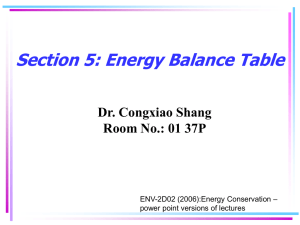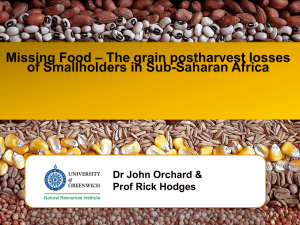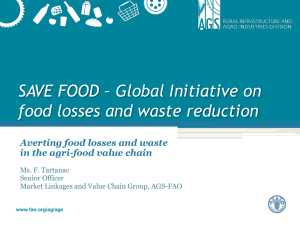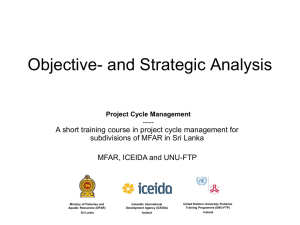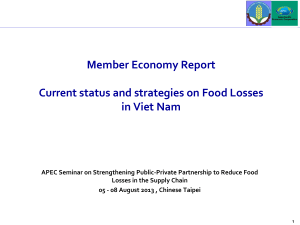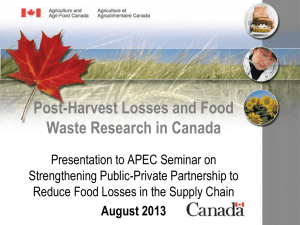Title goes here
advertisement
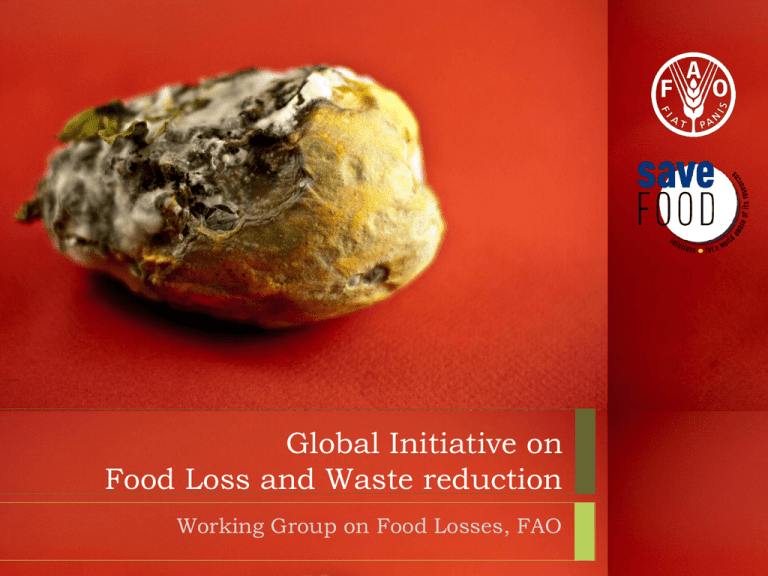
Global Initiative on Food Loss and Waste reduction Working Group on Food Losses, FAO Introduction Global Food Losses and Food Waste 1.3 billion ton ( 1 300 000 000 000 kg ) 11 // 33 Introduction Fisheries and Aquaculture Department Inter-divisional Working Group on Food Losses Rural Infrastructure & Agro-Industries (AGS) Nutrition and Consumer Protection (AGN) Plant Production and Protection (AGP) Animal Production and Health (AGA) Fisheries and Aquaculture Products, Trade & Marketing (FIPM) Contents 1. Extent of food losses and waste 2. Causes and prevention of food losses and waste 3. Global Initiative on Food Losses and Waste Reduction – SAVE FOOD Extent of food losses and waste CEREALS Extent of food losses and waste FRUITS & VEGETABLES Extent of food losses and waste PER CAPITA Causes and Prevention of food losses and waste In industrialized countries food gets lost when production exceeds demand. Prevention: Communication and cooperation between farmers. Causes and Prevention of food losses and waste High ‘appearance quality standards’ from supermarkets for fresh products lead to food waste. Prevention: - Consumer surveys by supermarkets. - Sales closer to consumers. Causes and Prevention of food losses and waste ‘Disposing is cheaper than using or re-using’ attitude in industrialized countries leads to food waste. Prevention: develop markets for ‘sub-standard’ products. Causes and Prevention of food losses and waste Abundance and consumer attitudes lead to high food waste in industrialized countries. Prevention: Public awareness. Causes and Prevention of food losses and waste In developing countries food gets lost due to: - Poor production planning - Production problems - Premature harvesting Prevention: - Organizing small farmers - Diversifying and upscaling production and marketing In general: - Improving the effeciency of the food supply chains Causes and Prevention of food losses and waste Poor storage facilities, packaging and lack of infrastructure cause postharvest food losses in developing countries. Prevention: investment in infrastructure, packaging and transportation. Causes and Prevention of food losses and waste Unsafe food is not fit for human consumption and therefore is wasted. Prevention: develop knowledge and capacity of food chain operators to apply safe food handling practices. Causes and Prevention of food losses and waste Lack of processing facilities causes high food losses in developing countries. Prevention: - improve investment climate for agro-industry - develop contract farming linkages between processors and farmer Causes and Prevention of food losses and waste - Large quantities on display and a wide range of products/ brands in supply lead to food waste in industrialized countries. - Inadequate market systems cause high food losses in developing countries. Prevention: Marketing cooperatives and improved market facilities. A new strategy for food loss reduction The impacts of food losses and waste are multi-faceted. - Food security - Nutrition, Food quality and safety - Economics and Distribution - Environment A new strategy for food loss reduction Strategies for reducing food losses are being adjusted. Reasons: - growing influence of private sector led enterprises - global market integration - urbanization - growing south-south food trade - ‘lengthening’ of food chains. A new strategy for food loss reduction Supply chain approach - Viable business case Sustainability of food supply chains Feasibility / effectiveness of interventions: - technically - economically - nutritionally, food security-wise - environmentally - socially and culturally NEED FOR PARTNERSHIP !! Global Initiative on Food Losses and Waste Reduction – SAVE FOOD THE KNOWLEDGE GAP √ Magnitude of food losses in food supply chains √ Causes of food losses in food supply chains ? Importance of different causes ? Impact and feasibility of solutions √ Beneficial effect of food loss reduction Global Initiative on Food Losses and Waste Reduction – SAVE FOOD PROGRAMME 2012-13 1 The effect of food waste and losses on food prices 2 Quantifying the causes and analysing the solutions to reduce losses, - a food supply chain approach, on a regional basis 3 The relationship between food products date marking and food waste 4 Raising awareness on food losses and waste - a world-wide media campaign 5 Regional Save Food Congresses Global Initiative on Food Losses and Waste Reduction – SAVE FOOD PARTNERSHIPS Interpack/ Messe Düsseldorf Consortium of companies and institutions in the food packaging industry FAO / Save Food welcomes partners to join the initiative www.save-food.org www.fao.org/save-food Internal Collaboration and Partnerships INTERESTED PARTNERS/ PARTIES International Fund for Agricultural Development (IFAD) World Food Programme (WFP) African Development Bank (AfDB) African Postharvest Losses Information System - APHLIS (Natural Resources Institute, EU Joint Research Centre) Donor countries – Germany, Switzerland, Norway International Trade Centre (ITC) AndinaPack – South America BBC World Service Wageningen University & Research Centre (WUR) European Packaging Summit (World Trade Group) Sustainable Packaging Coalition (GreenBlue) Rio+20 Climate Conference World Water Forum / World Water Week (SIWI) Global FoodBanking Network Thank you

